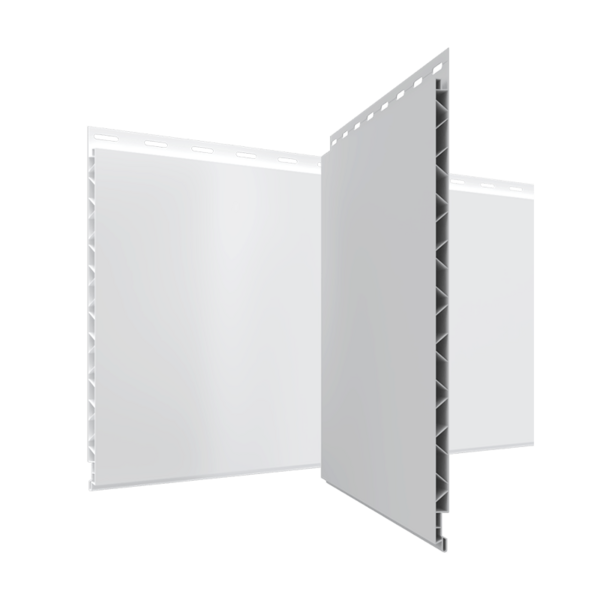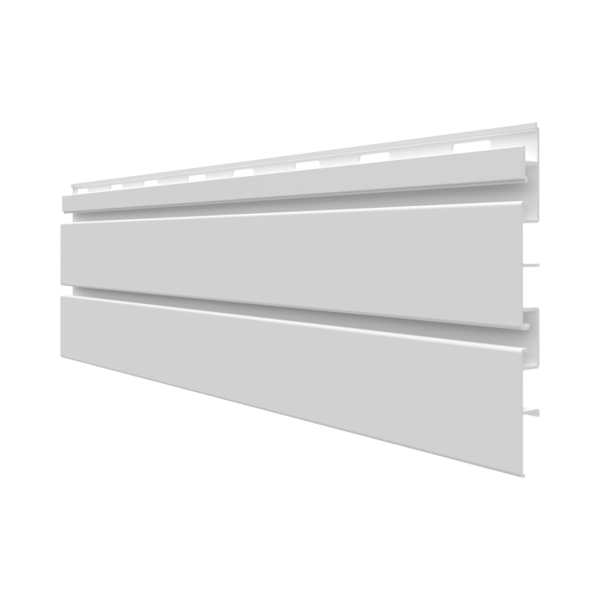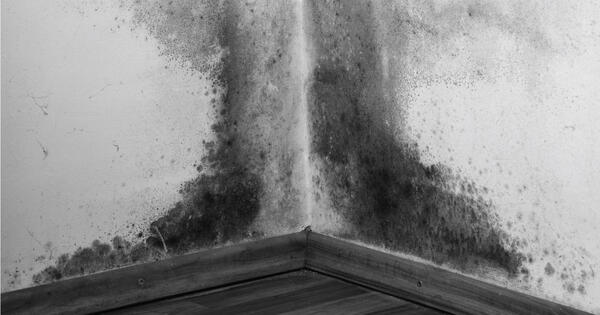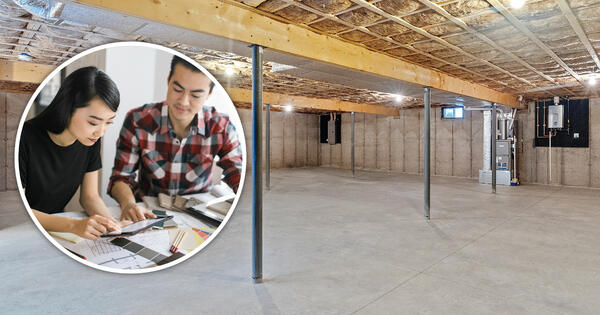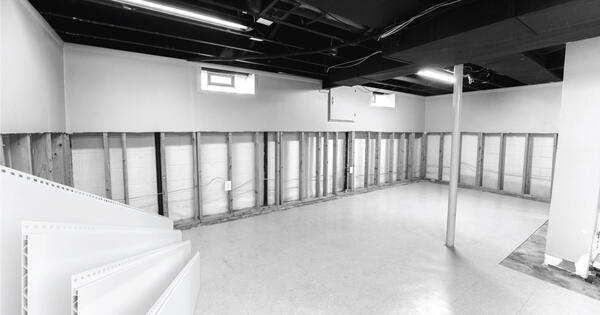Flooding, water seepage, and damp conditions are a persistent problem in many basements, causing mold, mildew, and untold damage. Repairs and remediation can be expensive. By addressing the root of the problem and making use of products like Trusscore Wall&CeilingBoard and Trusscore SlatWall, most basement water problems can be resolved successfully.
Waterproofing basement walls
- Basement flooding and basement water seepage are unpleasant problems that can be difficult to remedy
- Thorough investigation of the underlying problem and aggressive, professional remediation is the sure-fire route to a lasting solution
- But just in case water makes a return, install Trusscore products on basement walls and ceilings instead of drywall
- Unlike drywall, Trusscore Wall&CeilingBoard and Trusscore SlatWall can’t be damaged by water and are easy to clean and install
Property damage caused by a damp, leaky, or flooded basement is all-too common, one that seems to grow in frequency as weather and rainfall events become more extreme in the face of climate change.
Dealing with basement water issues isn’t necessarily straightforward. There can be many underlying reasons behind dampness or water in a basement, and a solution must address the specific issue at play to be effective. In many cases, a solution requires detective work to precisely pin down the source of the problem.
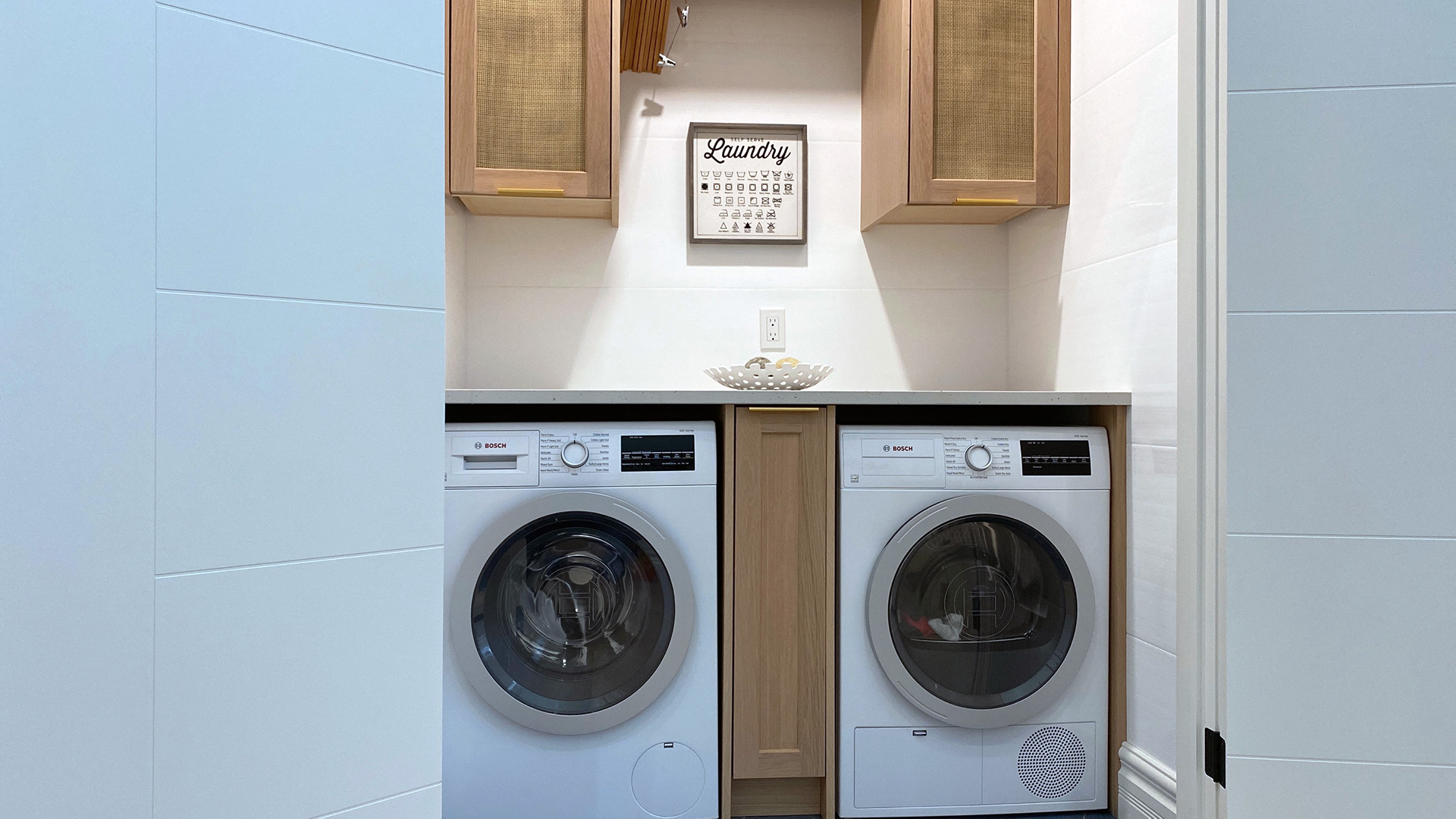
What Causes Water Damage in Basements?
In broad terms, moisture is frequently found in basements because they’re below grade (ground level). Like everything else, water and moisture are subject to gravity — always migrating to the lowest possible level — and the basement is the lowest floor of a building. Therefore, your basement is naturally prone to the accumulation of water and moisture.
But is gravity the only factor at play? Unfortunately, not. There can be many contributing issues underlying a basement water problem. Among them:
-
The home is in a low-lying area or at the bottom of a hill, and a higher-than-normal volume of water naturally flows towards it
-
The home is located near a stream, river, or water table that’s subject to flooding during storms or the spring melt
-
The home has settled or shifted, causing the foundation or basement walls to crack and allow moisture to enter
-
The basement’s interior drainage system is plugged or blocked
-
Improper basement wall construction
-
A broken or improperly operating sump pump
-
Improper exterior grading and drainage, causing water to run toward the house rather than away
-
Improper placement of downspouts, causing rainwater to flow into the soil adjoining the basement
-
Poor window quality, installation and sealing
Signs Your Basement Needs Waterproofing
The discoloration and swelling of basement drywall or a basement flooding episode are obvious signs that a water problem exists. Some basement water issues, however, are far more insidious.
In some cases, the clue that moisture is making its way into a basement comes in the form of a musty smell, which usually indicates mold or mildew growth. Mold and mildew both require the presence of moisture to survive.
Determining why and where water and moisture are entering a basement can be a challenge. Basement specialists can help, as can a device called moisture meter — a readily available tool at hardware stores, used to take measurements at various locations and identify problem areas.
Another discovery technique is to tape a 1’ x 1’ piece of tinfoil to the basement’s exterior cement or concrete wall with duct tape and leave it for a period of 24 hours. With this method, there are two outcomes to watch out for — both with distinct implications:
- If there is moisture or condensation present on the outside of the foil (the side of the foil facing the center of the room), the problem may simply be high humidity levels. In this case, a humidifier may remedy the problem.
- If the interior surface of the foil (the side of the foil in direct contact with the wall surface) is at all wet, it’s a sign that moisture is seeping through the wall and that a waterproofing system is required. Remediation in this case can be expensive. If the basement in question is finished, the drywall will need to be removed to access the outer wall. If the drywall is damaged or moldy, it will need to be remediated and removed entirely. Mold-covered studs can sometimes be cleaned with detergents or bleach.
How to Waterproof Your Basement Walls
Removing your basement drywall won’t, however, solve what was causing the moisture to enter the basement. Identifying the root of the problem and preventing it from reoccurring may require hiring experts – they best know how to waterproof basement walls.
There are some waterproofing products that can be injected into cracks in a foundation from the basement interior, sealing the wall off from moisture. In some cases, however, it may be necessary to attack the problem from the exterior of the wall or foundation which would mean digging away earth to gain access to the exterior foundation wall, then applying an exterior waterproofing product.
Once the basement water source has been identified and addressed, you’re now in a position to furnish and finish the basement interior with improved confidence that water damage won’t reoccur.
But there are no guarantees when it comes to basement moisture and water damage, which is why future-proofing your basement is a critical next step. You can easily accomplish this by opting for building products that can handle episodes of flooding or prolonged humidity, and you’ll want to avoid products that can’t — we’re looking at you, drywall!
Preventing Basement Water Damage: Stay One Step Ahead with PVC Paneling
Drywall, for example, is a poor choice for interior basement interior walls and ceilings. It performs poorly when it gets wet. It swells and discolors. When water reaches beyond the drywall’s paper surface into the gypsum layer, it rapidly breaks down, robbing the product of its strength and structural integrity.
And that cellulose-based paper surface we mentioned? Well, it’s a perfect breeding ground for mold and mildew when exposed to moisture.
Instead, consider lining walls and ceilings with innovative, resilient products like Trusscore SlatWall and Trusscore Wall&CeilingBoard.
Trusscore products are PVC-based, meaning they’re both long-lasting and impervious to water, and completely resistant to mold and mildew. This makes them ideal drywall alternatives for basements. In the event of a flood or leak, they can be cleaned with a simple wipe and, if necessary, common household cleaners.
Combine Trusscore Products to Calm Your Basement Chaos and Futureproof Your Space
If water damage ever recurs, you don’t want your first thought to be “I wish I didn’t store my stuff on the floor”.
Trusscore SlatWall is designed to blend seamlessly with Trusscore Wall&CeilingBoard to create custom wall-based basement storage system. Hooks, baskets, and shelves snap into place, delivering utility and allowing you to get items off the floor before any sign of basement water damage.
Both products install quickly – four times faster than drywall, in fact – and without drywall’s mess. In the event that water or moisture is found to making its way into your basement, both Wall&CeilingBoard and SlatWall can be easily removed, allowing access the space behind so you can address the problem. Best of all, the panels can be reused and re-installed once the underlying problem is solved.
Basement water issues can be tricky, not to mention costly and unpleasant. Consult with professionals, address the root of the problem, and install PVC wall and ceiling products like Trusscore Wall&CeilingBoard and Trusscore SlatWall to futureproof your basement from water problems and protect your investment.
Basement Products You Can Rely On
Wall&CeilingBoard
Trusscore Wall&CeilingBoard is an interlocking, interior PVC wall and ceiling panel that is lightweight, low maintenance, and outperforms alternative products like drywall and FRP.
Learn MoreSlatWall
Trusscore SlatWall is a high-strength, on-the-wall organization system that’s easy to install and seamlessly integrates with Trusscore Wall&CeilingBoard.
Learn More
